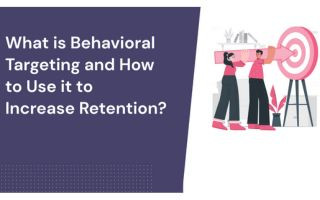In the rapidly evolving world of digital advertising, reaching the right audience with the right message has become more critical than ever. Behavioral targeting offers a powerful tool for achieving this goal. By leveraging insights into user behavior, businesses can deliver highly relevant ads that resonate with their audience, leading to improved ad performance and a better return on investment (ROI). This blog explores how to use behavioral targeting effectively to enhance your ad campaigns.
What is Behavioral Targeting?
Behavioral targeting is a digital marketing strategy that involves analyzing user behavior to deliver personalized advertising. This approach relies on data collected from users' online activities, such as their browsing history, search queries, and interactions with websites and apps. By understanding user behavior, advertisers can create more relevant and engaging ads, thereby increasing the likelihood of conversion.
How Behavioral Targeting Works
Behavioral targeting involves several key steps:
Data Collection: Advertisers collect data on users' online behavior through cookies, tracking pixels, and other tracking technologies. This data includes website visits, search terms, and interactions with content.
Data Analysis: The collected data is analyzed to identify patterns and trends. This analysis helps in segmenting users based on their interests, behaviors, and demographics.
Audience Segmentation: Based on the analysis, users are grouped into different segments. Each segment represents a specific behavior or interest, allowing for more tailored ad messaging.
Ad Delivery: Personalized ads are delivered to each segment based on their identified behavior. This ensures that users see ads relevant to their interests and needs.
Performance Monitoring: The effectiveness of the ads is monitored through various metrics such as click-through rates (CTR), conversion rates, and engagement levels. This data helps in optimizing future campaigns.
Benefits of Behavioral Targeting
Increased Relevance: By targeting users based on their behavior, ads are more relevant to their interests and needs. This relevance increases the chances of engagement and conversion.
Improved ROI: Personalized ads lead to higher click-through and conversion rates, which improves the overall ROI of your ad campaigns.
Enhanced User Experience: Users are more likely to appreciate ads that align with their interests, leading to a better overall experience and reduced ad fatigue.
Efficient Use of Ad Spend: Behavioral targeting helps in allocating ad spend more effectively by focusing on segments that are more likely to convert.
Implementing Behavioral Targeting
To effectively use behavioral targeting in your ad campaigns, follow these steps:
Define Your Goals: Clearly outline your advertising goals, whether it's increasing brand awareness, driving traffic, or boosting sales. Your goals will guide your targeting strategy.
Gather and Analyze Data: Use analytics tools to collect data on user behavior. This includes tracking user interactions on your website, social media, and other digital platforms.
Segment Your Audience: Create audience segments based on behavior, interests, and demographics. For example, segment users who have recently searched for specific products or visited certain pages.
Create Personalized Ads: Develop ad content tailored to each segment. For instance, if a user frequently browses travel sites, show them ads for travel deals or destinations.
Use Dynamic Creative: Implement dynamic creative strategies that allow ads to change based on user behavior in real-time. This ensures that users always see the most relevant content.
Monitor and Optimize: Continuously track the performance of your ads and make data-driven adjustments. Analyze metrics such as CTR, conversion rates, and bounce rates to refine your targeting strategy.
Ensure Privacy Compliance: Always adhere to privacy regulations and obtain user consent for data collection. Transparency and respect for user privacy are crucial in maintaining trust.
Best Practices for Behavioral Targeting
Leverage Multiple Data Sources: Combine data from various sources, including website analytics, social media, and CRM systems, to gain a comprehensive understanding of user behavior.
Test and Iterate: Regularly test different ad creatives, targeting strategies, and audience segments. Use A/B testing to determine what works best for your audience.
Focus on Quality Over Quantity: Prioritize targeting users who are more likely to convert rather than casting a wide net. Quality targeting leads to better ad performance and ROI.
Stay Updated with Trends: Keep up with the latest trends in behavioral targeting and digital marketing. Technology and user behavior are constantly evolving, so stay informed to maintain a competitive edge.
Behavioral targeting is a powerful strategy for enhancing ad performance by delivering personalized and relevant content to users. By understanding and leveraging user behavior data, businesses can create more effective ad campaigns, improve ROI, and provide a better user experience. Implementing behavioral targeting requires careful planning, data analysis, and ongoing optimization. With the right approach, you can transform your digital advertising efforts and achieve remarkable results.
Remember, the key to successful behavioral targeting lies in balancing personalization with privacy. By respecting user preferences and complying with regulations, you can build stronger relationships with your audience and drive meaningful engagement with your ads


